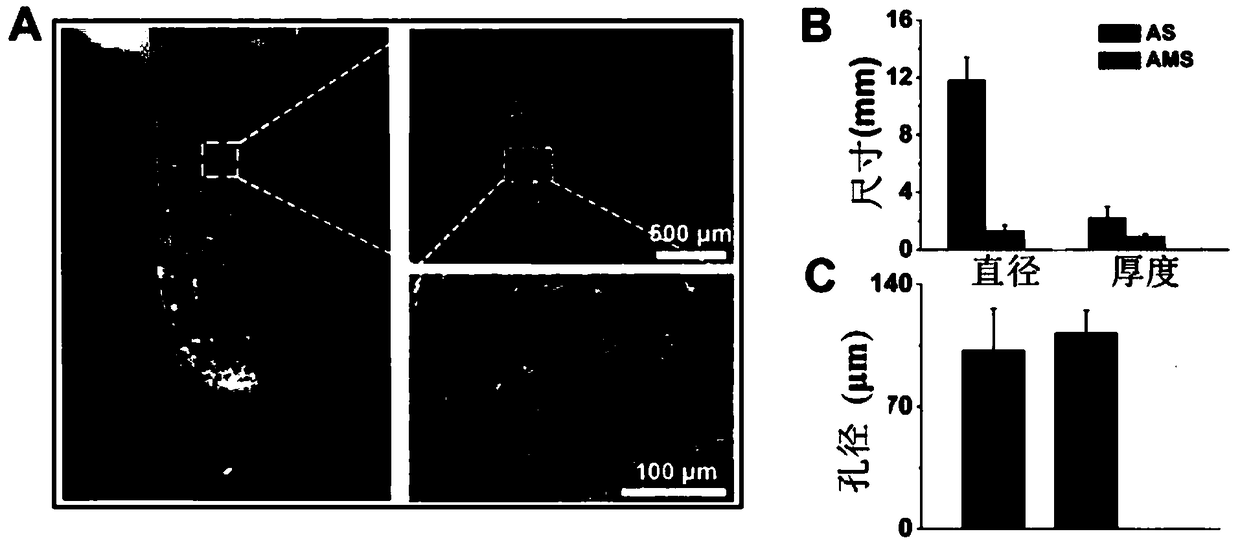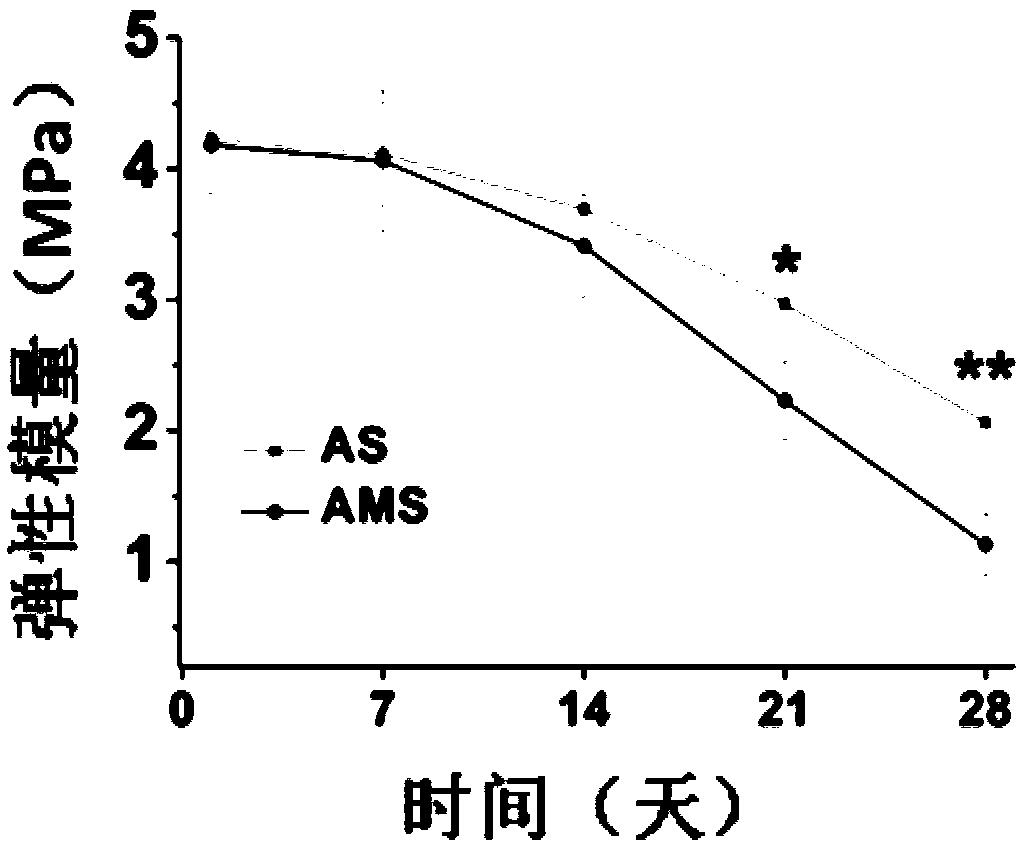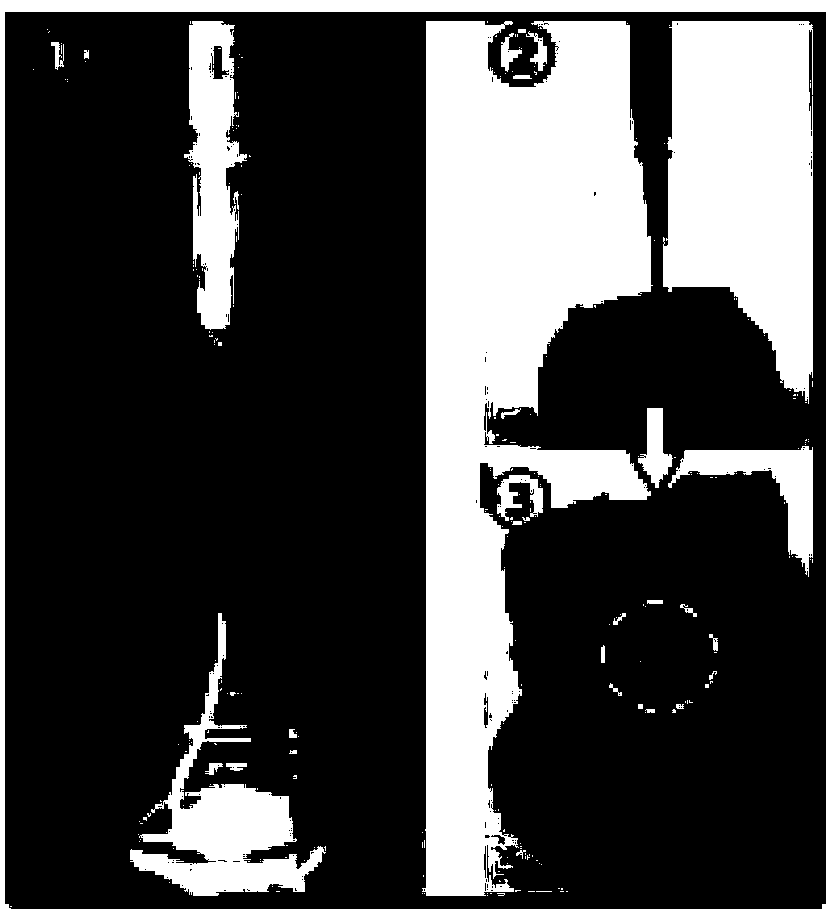Application of porous micro stent to regeneration and repair of tissues
A technology for tissue regeneration and organization, applied in the field of regenerative medicine, can solve the problems of undeveloped stem cell survival, expansion, directional differentiation, injectable three-dimensional porous micro-scaffold, etc., to achieve the effect of promoting stem cell proliferation, accelerating growth, and promoting adherence
- Summary
- Abstract
- Description
- Claims
- Application Information
AI Technical Summary
Problems solved by technology
Method used
Image
Examples
Embodiment 1
[0106] Example 1 Preparation of Sodium Alginate Three-Dimensional Porous Microscaffold
[0107] 1.1. Preparation of sodium alginate three-dimensional porous scaffold (AS)
[0108] Sodium alginate (alginate) used in this study was RGD polypeptide (GGGGRGDASSP, purchased from Shanghai Qiangyao).
[0109] Modification method of RGD-alginate (RA):
[0110] Add EDC / NHS to sodium alginate solution, stir at room temperature for 4 hours, add RGD polypeptide and stir well, and then stand at 4°C overnight; then transfer the solution to a dialysis bag (3.5kDa) for dialysis for 3 days, then freeze-dry for 24 hours to obtain RA ; Sealed and stored at -20°C.
[0111] Dissolve 2.0g RA in 100mL deionized water, transfer it to a 24-well plate after fully dissolved, 0.5ML / well, then place the plate in a 4°C refrigerator for 2h, and a -20°C refrigerator for 8h, then freeze-dry for 24h . After freeze-drying was completed, calcium chloride (2%, w / v) solution was added into the well plate, 1 ...
Embodiment 2
[0115] Example 2 Characterization of Sodium Alginate Three-dimensional Porous Microscaffold
[0116] Scanning electron microscopy (SEM; S-4800; Hitachi, Japan) was used to characterize the microstructure (pore size, porous morphology, etc.) To measure the elastic modulus of each scaffold.
[0117] Soak the freeze-dried micro-scaffold in PBS, after it fully absorbs water and swells, filter off the PBS, add a little low-concentration sodium alginate solution to the micro-scaffold and mix well, then transfer to a syringe (1mL size) for freeze-drying . For in vivo experiments, just add the cell suspension to the micro-scaffold and mix well before injection. Injectability was verified with dense tissue.
[0118] Experimental results:
[0119] Such as figure 1 As shown in A, SEM results show that AMS has a three-dimensional porous structure with high connectivity, and its pore structure is not damaged; as figure 1 As shown in B-1C, the size of the scaffold is about 1 mm, and...
Embodiment 3
[0122] Embodiment 3 injectable AMS preparation
[0123] The prepared AMS was soaked in PBS at 4°C for 48h; then the PBS was filtered off, the AMS was transferred to a 1ml syringe, the injection plunger was plugged, and sealed and stored at 4°C after freeze-drying.
PUM
| Property | Measurement | Unit |
|---|---|---|
| diameter | aaaaa | aaaaa |
Abstract
Description
Claims
Application Information
 Login to View More
Login to View More - R&D
- Intellectual Property
- Life Sciences
- Materials
- Tech Scout
- Unparalleled Data Quality
- Higher Quality Content
- 60% Fewer Hallucinations
Browse by: Latest US Patents, China's latest patents, Technical Efficacy Thesaurus, Application Domain, Technology Topic, Popular Technical Reports.
© 2025 PatSnap. All rights reserved.Legal|Privacy policy|Modern Slavery Act Transparency Statement|Sitemap|About US| Contact US: help@patsnap.com



